Images of Childhood Skin Problems

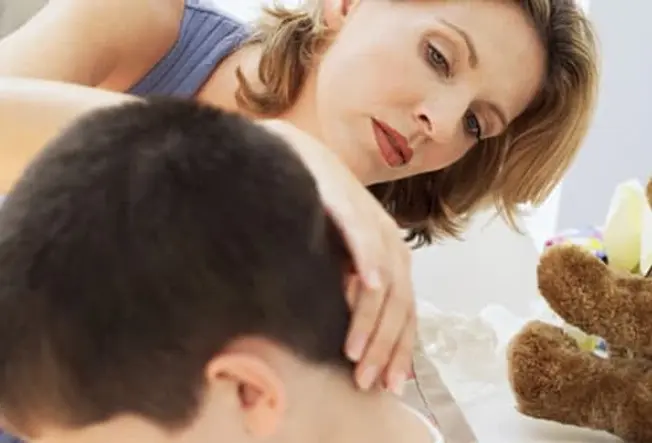
What's That?
Wondering about that rash, welt, or bump on your child's skin? Sickness, allergies, and heat or cold are often behind kids' skin changes. Most aren't a big deal and are easy to treat. You can learn to tell what many of them look like. Of course, always check with your child's doctor to know for sure and get the right treatment.
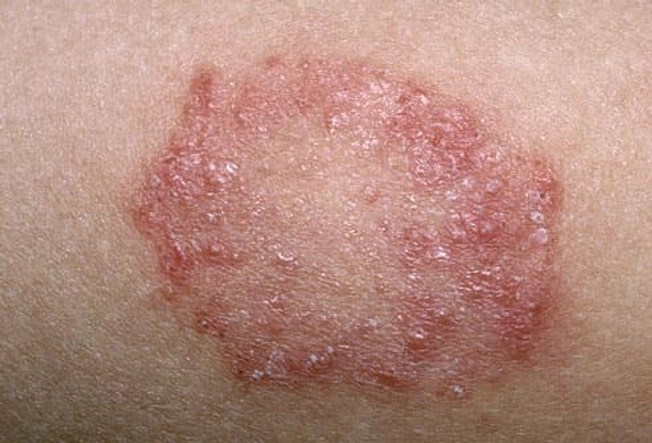
Ringworm
Worms don't cause ringworm. And ringworm doesn't need to be itchy. It's caused by a fungus that lives off dead skin, hair, and nail tissue. It starts as a red, scaly patch or bump. Then comes the telltale itchy red ring. The ring has raised, blistery, or scaly borders. Ringworm is passed on by skin-to-skin contact with a person or animal. Kids can also get it by sharing things like towels or sports gear. Your doctor may treat it with antifungal creams.
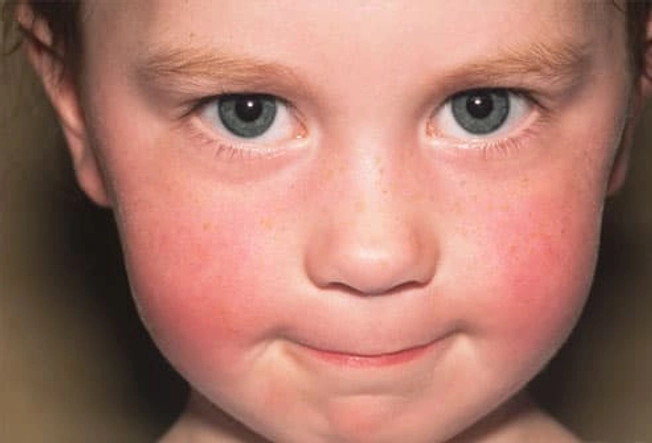
Fifth Disease
This contagious and usually mild illness passes in a couple of weeks. Fifth disease starts with flu-like symptoms. A bright face ( classically described as a 'slapped cheek' appearance) and body rash follow. It’s spread by coughing and sneezing and most contagious the week before the rash appears. It's treated with rest, fluids, and pain relievers (do not give aspirin to children). If your child has fifth disease and you are pregnant, call your doctor.
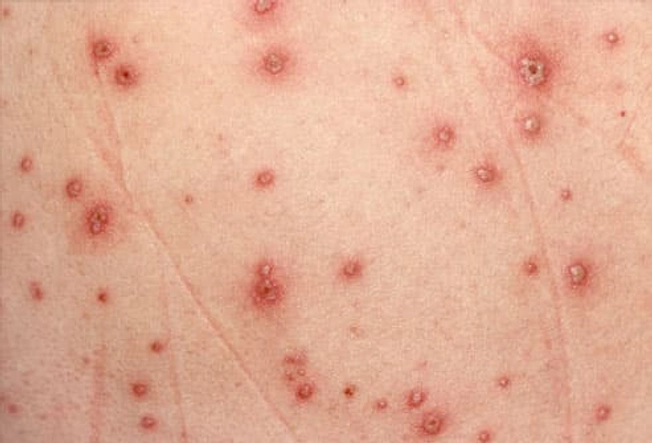
Chickenpox
This once-common rash isn't seen as much in today's kids thanks to the chickenpox vaccine. It’s very contagious, spreads easily, and leaves an itchy rash and red spots or blisters all over the body. The spots go through stages. They blister, burst, dry, and crust over. Chickenpox can be very serious. All young kids should get a chickenpox vaccine. So should teens and adults who never had the disease or the vaccine.

Impetigo
Impetigo, caused by bacteria, creates red sores or blisters. These can break open, ooze, and develop a yellow-brown crust. Sores can show up all over the body but mostly around the mouth and nose. Impetigo can be spread through close contact or by sharing things like towels and toys. Scratching can spread it to other parts of the body. It's treated with antibiotic ointment or oral antibiotics.
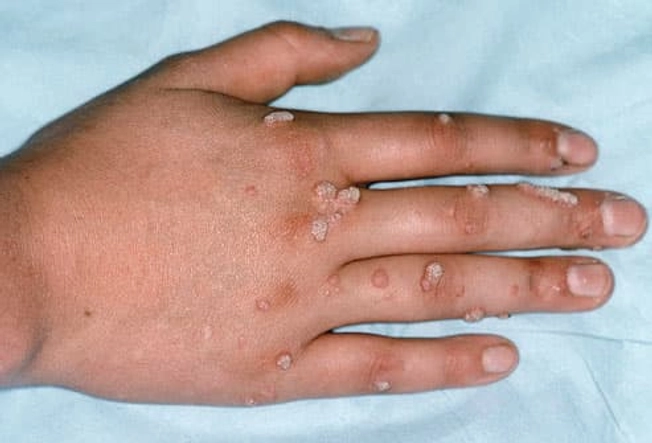
Warts
A virus causes these funky but mostly harmless, painless skin growths. Warts can spread easily from person to person. They also spread by touching an object used by a person with the virus. They're most often found on fingers and hands. To prevent warts from spreading, tell your child not to pick them or bite nails. Cover warts with bandages. They can easily be treated in a doctor's office by a freezing procedure.
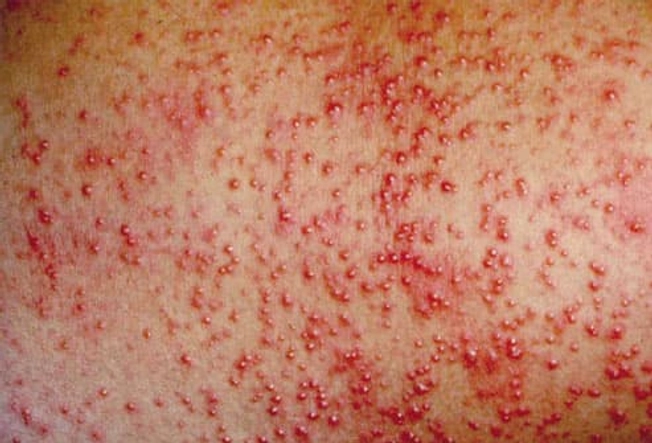
Heat Rash ('Prickly Heat')
Blame blocked sweat ducts. Heat rash looks like small red or pink pimples. You usually see heat rash on the head, neck, and shoulders of babies. The rash often comes when well-meaning parents dress a baby too warmly. But it can happen to any child in very hot weather. Dress your baby in only one more layer than you're wearing. It's OK if their feet and hands feel cool to the touch.
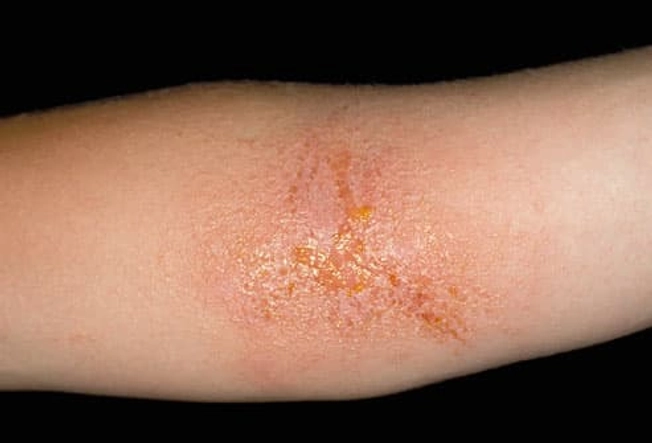
Contact Dermatitis
Some kids' skin reacts after touching foods, soaps, or plants like poison ivy, sumac, or oak. The rash usually starts within 48 hours after skin contact. Minor cases may cause mild redness or a rash of small red bumps. In severe cases you may see swelling, redness, and larger blisters. This rash usually goes away in a week or two but can be treated with an anti-inflammatory cream like hydrocortisone.
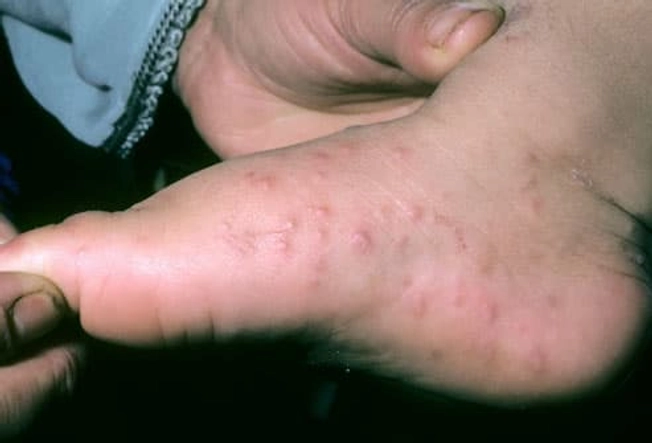
Hand-Foot-Mouth Disease (Coxsackie)
Despite its scary name, this is a common childhood illness. It starts with a fever, followed by painful mouth sores and a non-itchy rash. The rash blisters on hands, feet, and sometimes buttocks and legs. It spreads through coughing, sneezing, and used diapers. So wash hands often. Coxsackie isn’t serious and usually goes away on its own in about a week.
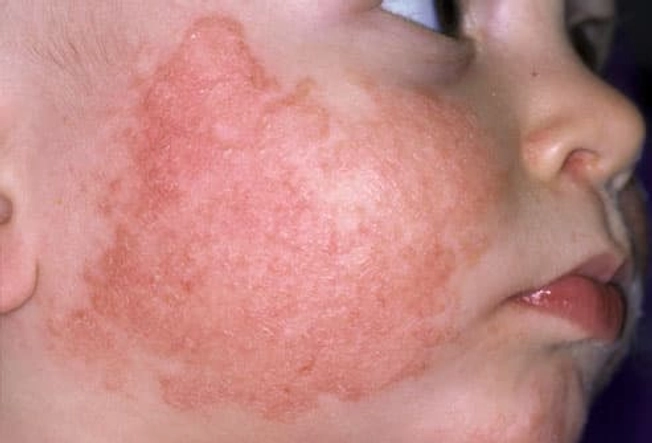
Eczema
Kids prone to eczema may have other allergies and asthma. The exact cause isn't clear. But kids who get it tend to have a sensitive immune system. Watch for a raised rash with dry skin and intense itching. Atopic dermatitis is the most common type of eczema. Some children outgrow it or have milder cases as they get older.
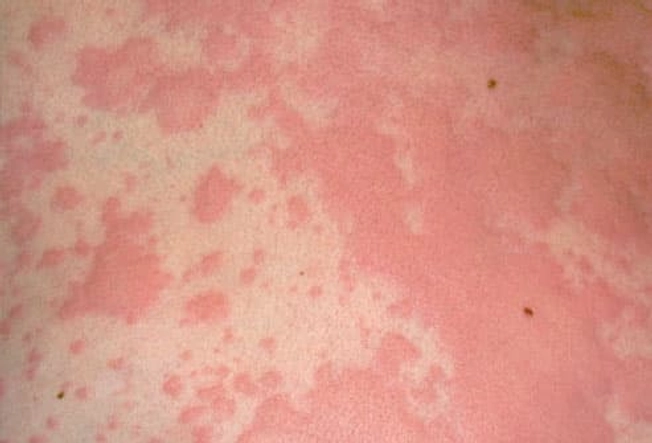
Hives
Many things can trigger these itchy or burning welts. Medicines such as aspirin (which kids should never take) and penicillin can set off hives. Food triggers include eggs, nuts, shellfish, and food additives. Heat or cold and strep throat can also cause hives. Welts can show up anywhere on the body and last minutes or days. Sometimes an antihistamine can help. Hives can be a sign of serious problems, especially when they come with breathing troubles or swelling in the face. In those cases or if hives don't go away, see your doctor.

Scarlet Fever
Scarlet fever is strep throat with a rash. Symptoms include sore throat, fever, headache, belly pain, and swollen neck glands. After 1-2 days, a red rash with a sandpaper texture shows up. After 7-14 days, the rash rubs off. Scarlet fever is very contagious, so wash hands often to keep it from spreading. Call your child's doctor if you think your child has it. They'll probably be treated with with antibiotics.
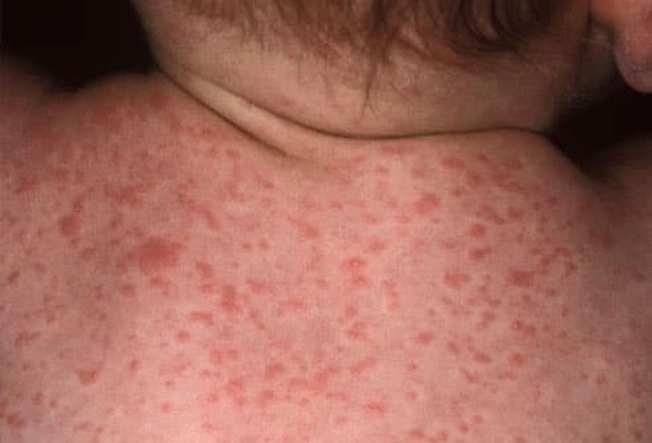
Roseola (Sixth Disease)
Roseola, a mild illness, gets its nickname from a list of six common childhood rashes. Young kids 6 months to 2 years are most likely to get it. It's rare after age 4. It starts with a cold, followed by a few days of high fever (which can trigger seizures). Then the fevers end suddenly. They're followed by a rash of small, pink, flat, or slightly raised bumps. It shows up first on the chest and back, then hands and feet.